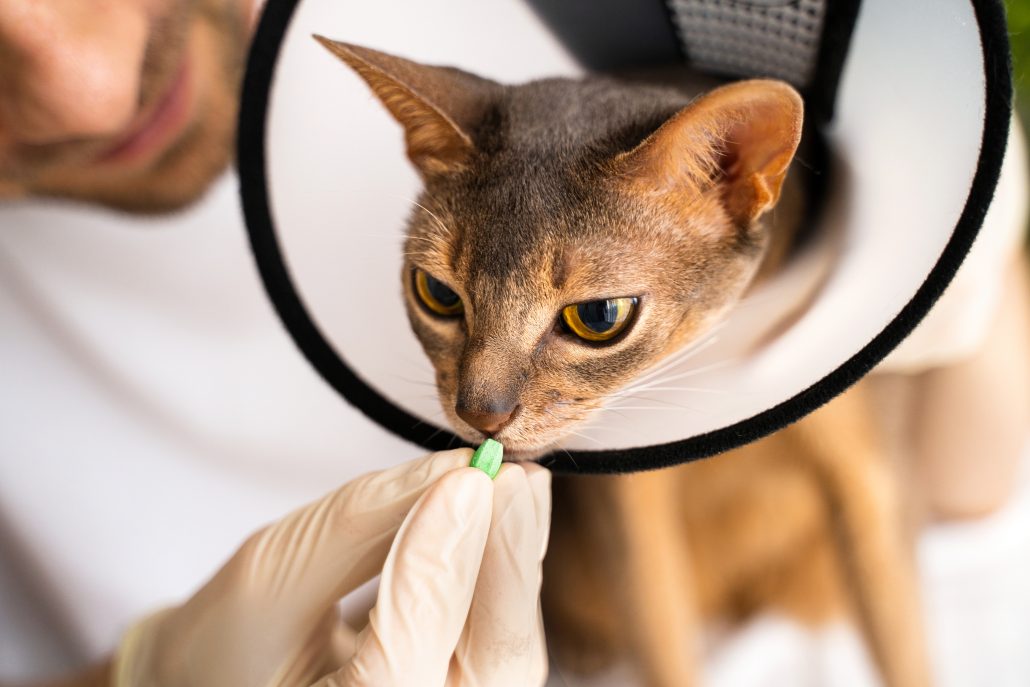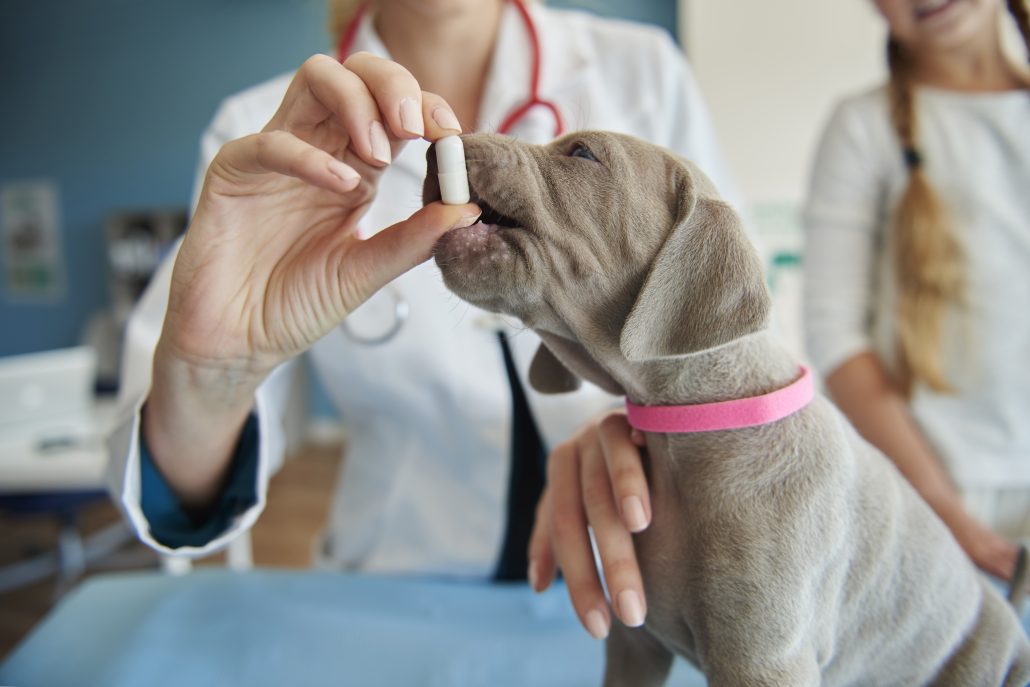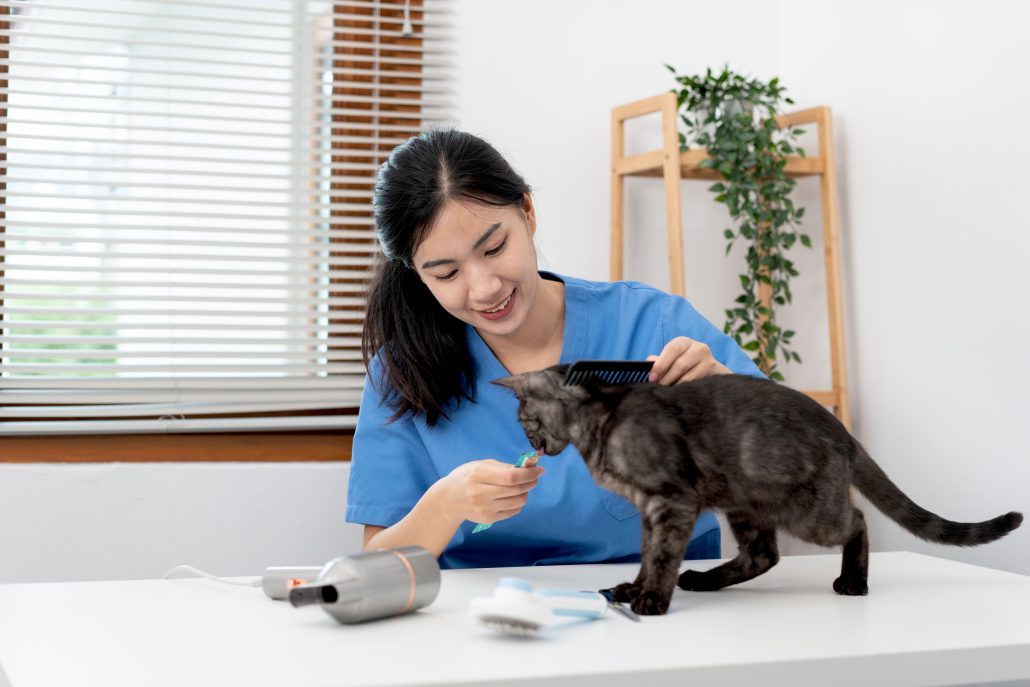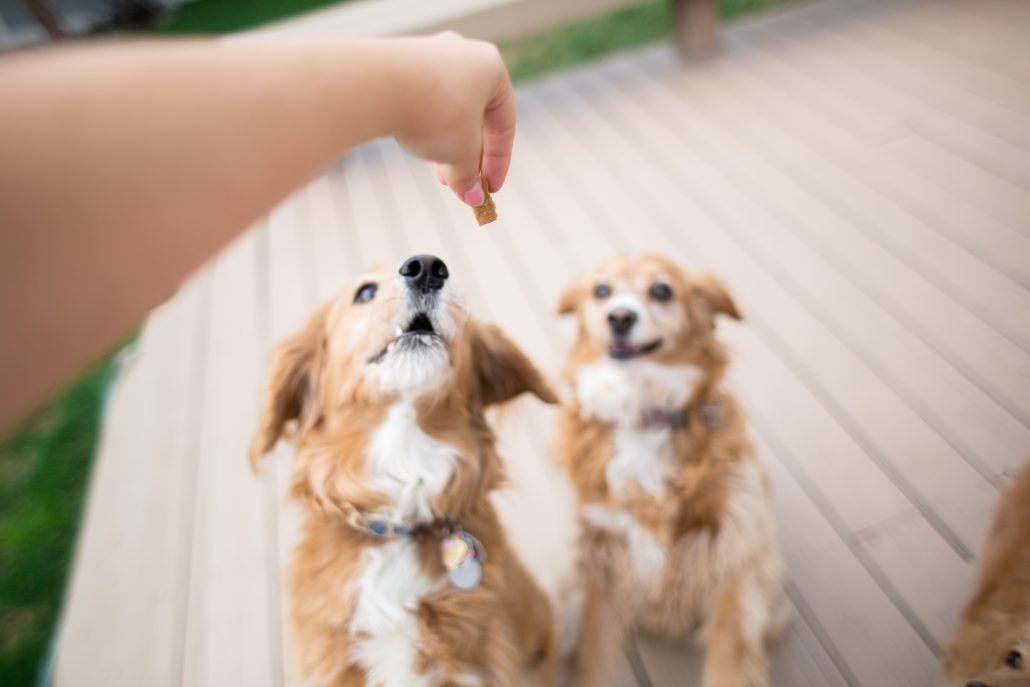
A spoonful of sugar helps the medicine go down – it’s a saying we’ve all heard when we have to convince ourselves (or someone else) to take medicine. But what about our furry friends when giving medication can sometimes feel like mission impossible? Whether it’s your playful pup or your finicky feline, getting them to take their medicine can be a real challenge.
While they may not be swayed by a sweet treat, like many of us are, giving your pet medication doesn’t have to be a battle. With the right approach, you can turn what seems like a daunting task into a smooth and even enjoyable experience for both you and your pet!
In this post, we explore some tried-and-true tips and tricks to giving your pet medication. Don’t miss another dose ever again!
Preparing For Medication
Before you start administering any medication to your pet, it is always best to start with a chat with your veterinarian. They’ll walk you through everything you need to know, from the type of medication—whether it’s chewable, tablets, powders, liquids, or topical—to understanding the prescription details like how often and when to give it.
When you get a new prescription, make sure you fully understand the instructions. Is it a daily dose, or just when needed? Should it be given with food or on an empty stomach? Don’t be shy about asking essential questions—your vet is there to help!
Once you have the medication in hand, pay close attention to dosage instructions to ensure your pet gets the right amount. Look out for any special storage requirements—some meds need to be kept in the fridge or have to be given after a meal, for example. Also, familiarise yourself with possible side effects. Knowing what to expect can help you monitor your pet’s reaction and catch any issues early.

Tips For Giving Medication
Pills can be tricky, but with a bit of creativity, you can outsmart even the most discerning pet.
- Hide in a Tasty Treat: Wrap a tablet in soft cheese or peanut butter for dogs, or sneak it into some tuna or salmon for your finicky feline. Be sure to use your pet’s favourite treat, as this makes it more appealing!
- Try Pill Pockets: These are nifty little pouches or pastes that help hide pills.
- Direct Administration: For stubborn pets, gently tilt their head back, place the pill at the back of their tongue, and hold their mouth shut. Encourage swallowing with a gentle nose blow or a quick rub on the throat. They may struggle, but a few seconds of discomfort is better than a sick pet!
Liquid Medications
Liquid meds can be tricky, but these tips will help you master the art:
- Use a Syringe: Place the syringe behind their “fang” teeth and aim at the side of their mouth. Go slow, letting the liquid land on their tongue for easy swallowing.
- Expect a Bit of Mess: It’s normal if a bit ends up on the floor—your vet typically factors this in when prescribing doses.
- Avoid Mixing with Food: Pets can be picky and might sniff out medicine in their food and leave it untouched.
Topical Medications
Applying topical meds is straightforward, but some pets may try to lick or rub them off:
- Timing is Key: Apply topical medication just before mealtime to keep them distracted while the medication absorbs into their skin.
- Use Protective Gear: Elizabethan collars (or cones) or even a snug shirt can prevent them from messing with the medication site.

General Tips & Tricks For Giving Medication
- Praise and Relax: Lots of pets, pats, and a calm voice can soothe nerves and make med time less stressful.
- Wrap for Comfort: Swaddle smaller pets in a blanket. This provides them with a sense of security during medication time and can help keep them still and secure.
- Make it a Game: Turn medication time into a fun activity by hiding meds in a treat-tossing game. They’ll be so focused on catching treats, that they won’t notice when you’ve slipped a pill in between them.
- Competitive Treat Time: If you have multiple pets, hide the medicine in one treat and let the competition for treats do the rest (just make sure the right pet gets the medicated one!).
- Training Helps: Teach your pet from an early age to take meds. This is an important skill that can be taught with plenty of treats and praise.
- Consult Your Vet: If you are still struggling, your vet is the ultimate ally. They’ll be able to help administer meds and provide insights on what will work best for your pet.
What to Avoid
- Avoid Chasing: Never chase or corner your pet to give medication. This can stress them out and can lead to bites.
- No Microwaving Meds: Never microwave any medication, including liquids as it can alter their effectiveness.
- Don’t Crush Without Consultation: Crushing pills or opening capsules can change how meds work. Always check with your vet first.
And, Remember – Practice Makes Perfect!
Giving medication to your pet can be challenging at first, but with practice, patience, and these tips, you’ll soon be a pro. Keep it positive, and soon your pet will be taking their meds in no time!

Key Takeaways For Mastering Medication Time
Giving medication to your pet doesn’t have to be a daunting task—it’s all about finding what works best for them (and maybe a few sneaky tricks!). From hiding pills in their favourite treats, administering liquid meds with a gentle touch, or applying topical treatments strategically, there are a number of ways that can make medication time easy.
Remember, every pet is different, so don’t hesitate to experiment with different methods until you find the right one.
And if you ever feel stuck or unsure, we’re just a phone call away! At The House Call Vet, we understand that your pet’s health is your top priority and our vets are here to help guide you and your furry companion through every step of the way.
If you need further assistance or have any questions about medication or your pet’s well-being, don’t hesitate to reach out to us. Our dedicated team is here to provide compassionate care and expert advice whenever and wherever you need it.

